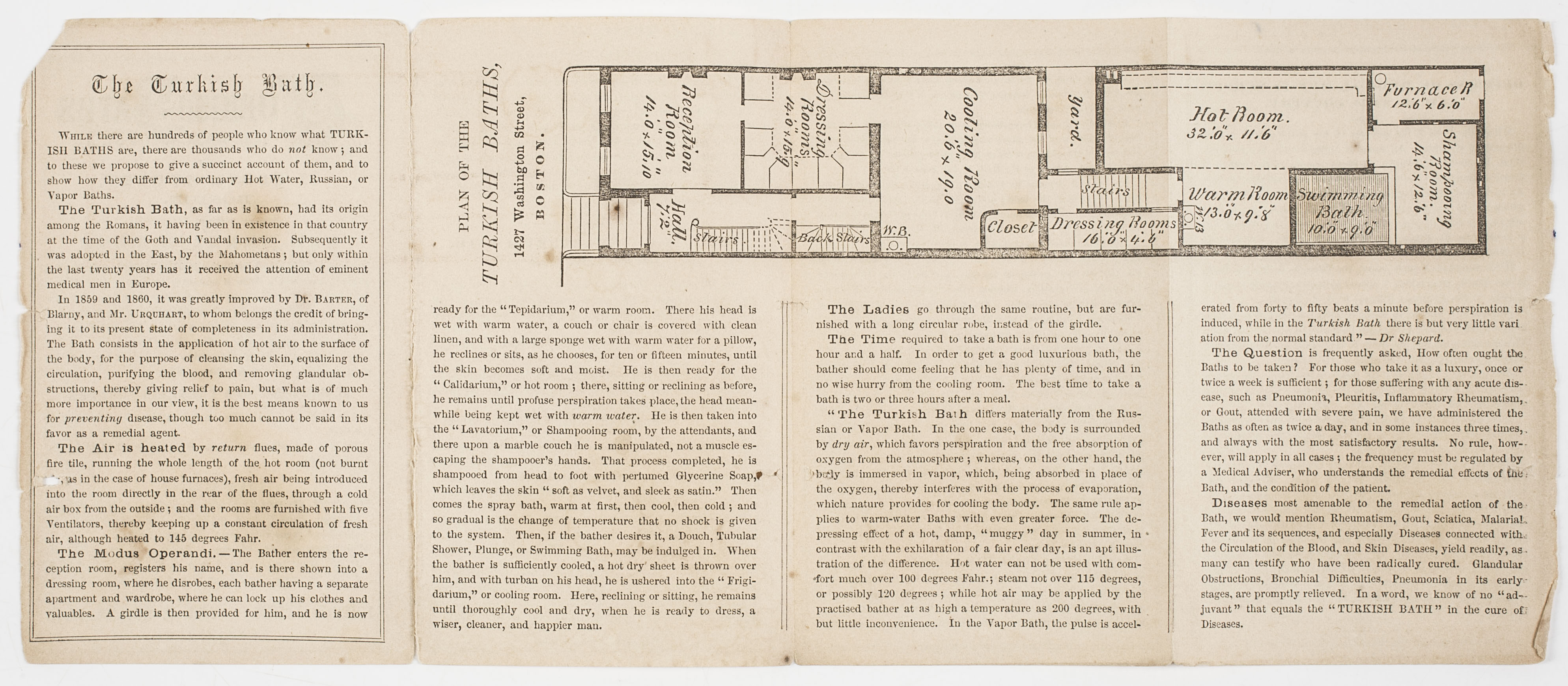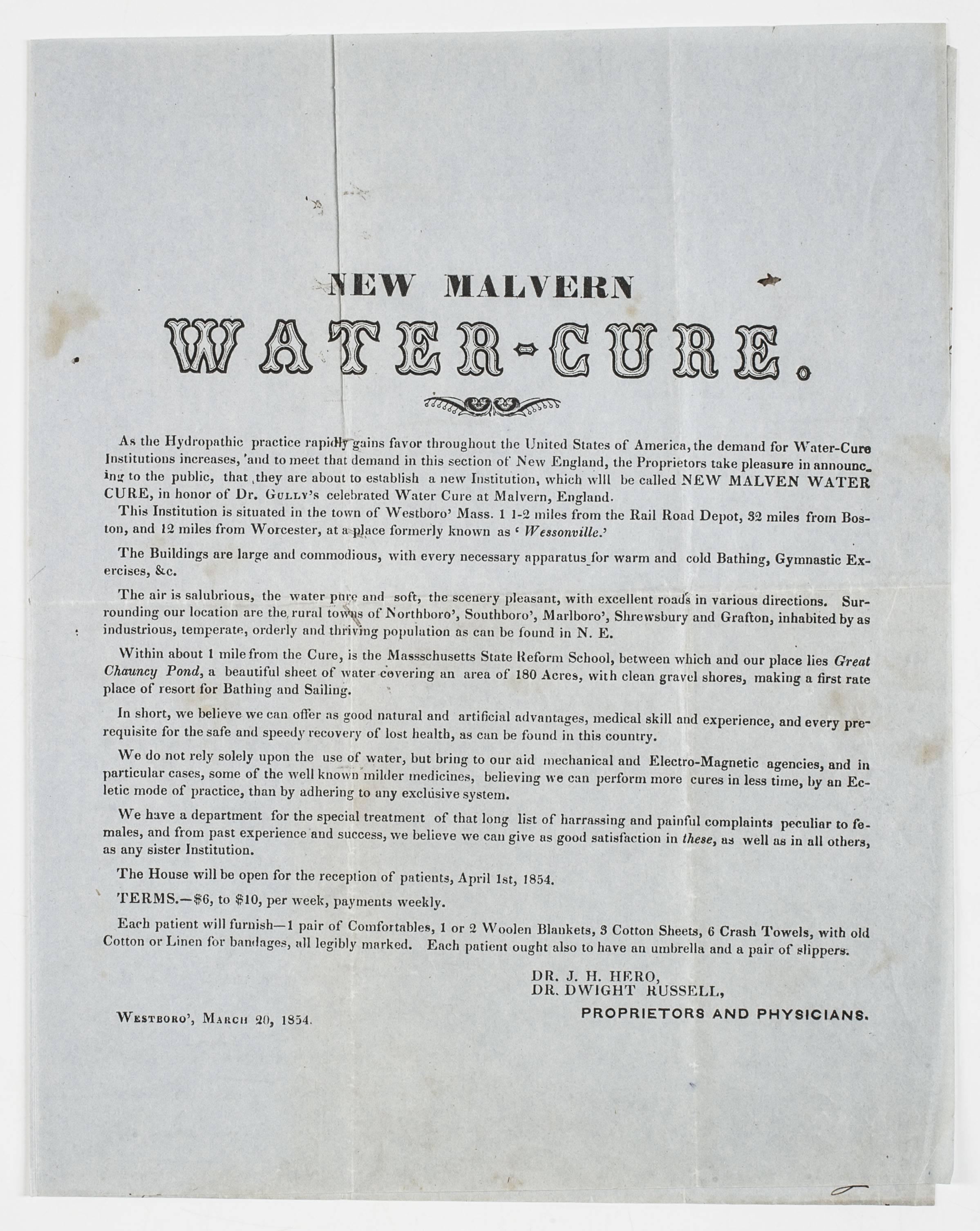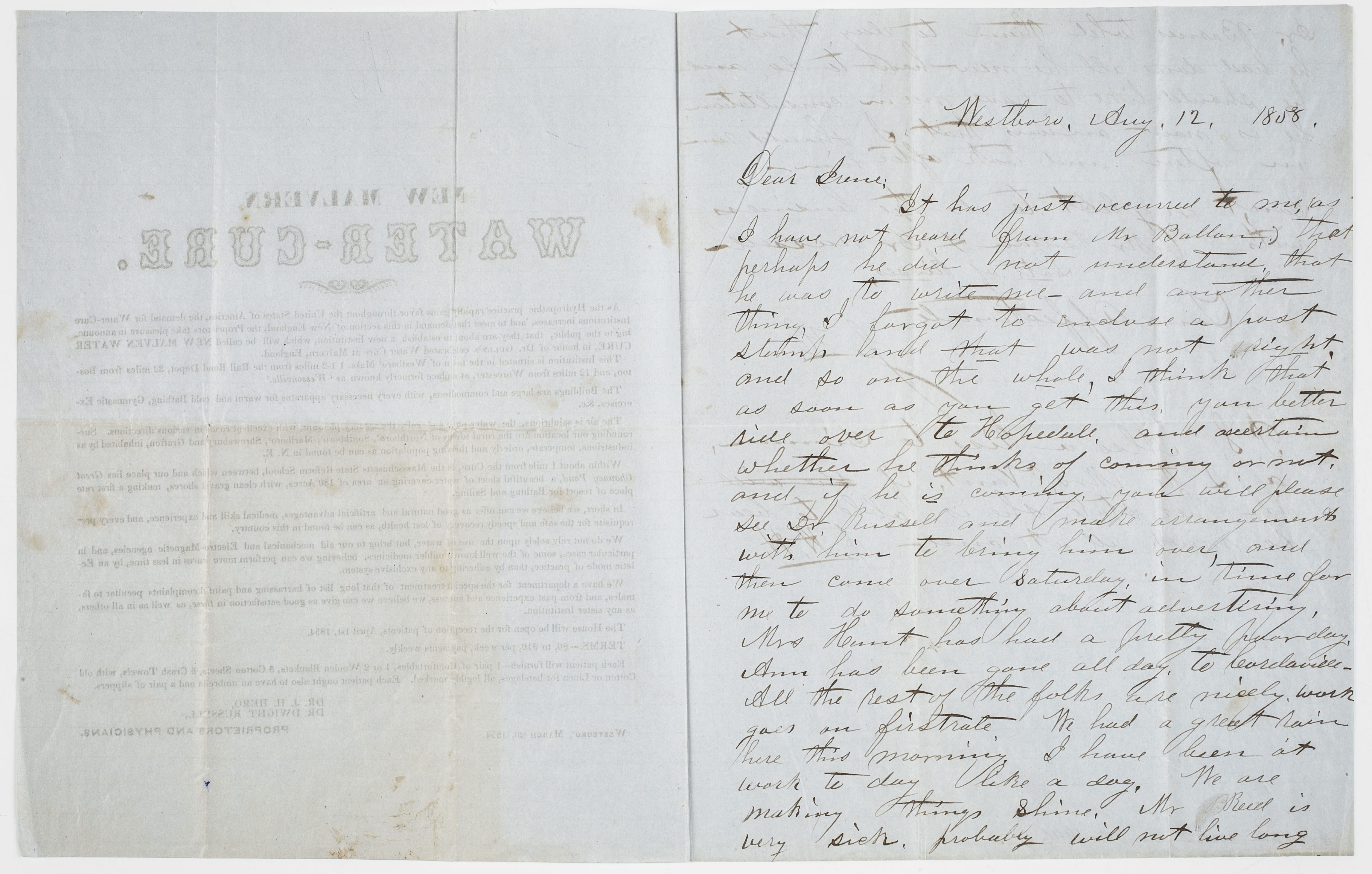In the mid-nineteenth century, “taking the waters,” or hydropathy, became a fashionable so-called natural therapy. It was first promoted in Europe by Austrian Vincenz Priessnitz after he claimed to have mended his broken ribs in the spring waters of Grafenberg, Silesia. His spa attracted crowds, including royalty. Joel Shew, a physician from New York, became an immediate advocate of the system and is reputed to have introduced hydropathy to America in 1844. Interest spread rapidly and water cure emerged as a popular alternative to the standard remedies of bleeding, purging, and puking advocated by most physicians.
A recently processed collection pertaining to John Hero, M.D., provides a fascinating picture of the industry in general and his spa in particular. Correspondence, handbills, and newspaper clippings about hydropathy document Dr. Hero’s path to the eventual establishment of his spa in Westboro, Massachusetts.
A stream of letters from Butler Wilmarth, M.D., to Hero beginning in 1849 traces the development of their eventual, if short-lived, partnership. At the start of their correspondence, Wilmarth noted that he would give a lecture on the water cure in Leverett. In subsequent letters, Wilmarth discussed his patients, his feelings about allopathic medicine, homeopathy, and the possible “indelicacy for a male practitioner” in treating female patients. It is evident that both men were treating patients but struggling to make ends meet. The letters reveal them as caring practitioners and as men who wanted to make money.
To improve their chances of launching a successful partnership, John Hero decided acquiring a medical degree at Syracuse would be “time and money well invested.” In one letter during this period, Wilmarth reported sending Hero a skeleton which he had prepared in lye. While Hero pursued his education, Wilmarth was employed at various institutions, including New Graefenberg Hydropathic and Kinesipathic Establishment and the New Lebanon Springs. His letters included thoughts about their future practice, including sitz baths, douches, exercise, “motorpathy” and electricity as possible therapies.
In 1854, shortly after their new venture, the New Malvern Water-Cure, opened in Westboro, Wilmarth was tragically killed in a train wreck, leaving Hero to make a success of the business. It was not easy. In a letter from his wife Irene, then visiting her sister, she wrote, “If your ship has come in, I wish you would send me one dollar when you write. How are money matters with you? I hope they will not have you in prison when I return.”
One piece of family correspondence especially enhances the collection. By using the back page of a brochure advertising his New Malvern Water-Cure to write his wife, Hero gave us both a printed record of his establishment and a hand-written summary of his work. The printed pamphlet describes the history, activities, cost, and requirements of the Westboro water cure. The letter to Irene suggested a number of work-related errands for her to undertake and demonstrated that she was fully involved in the business. The pamphlet also displayed Dwight Russell as a partner.
Among the various papers is a remarkable handbill from Turkish Baths, Boston, which unfolds to four pages of information, including a floorplan of the baths. The collection also contains an 1879 handwritten legal document regarding the purchase of the Charles Washburn Estate for $800, used as a Turkish Bath Establishment and called Dr. Hero’s Cure Corner, located on Arch and Summer Street in Worcester.
Hero seems to have advertised widely. Several letters in the collection, from as far away as South Carolina, solicit information from Hero about his cures. Despite all the early difficulties, the Heros clearly established successful water cure establishments in Westboro and Worcester.


